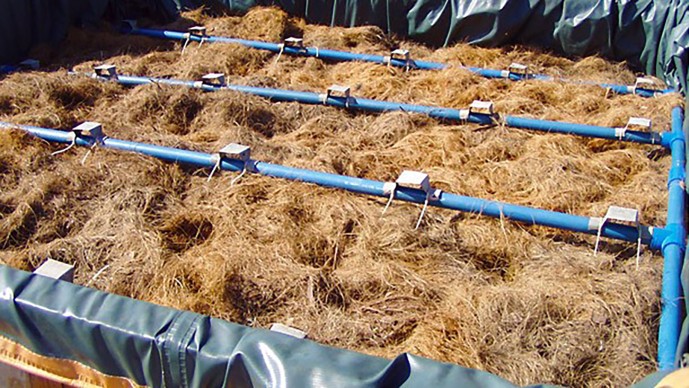Create the Next Generation of Sanitation Technologies (Round 6)

Roadblock:
Some 2.5 billion people in developing countries around the world practice open defecation or use unsafe pits for their sanitation needs. An additional 2.1 billion people living in urban areas only capture and store their excreta (fecal matter and urine), with no economically viable way to ensure extraction, transport, treatment, and disposal of it once the on-site storage facility is full. The consequences for the poor of these failures are profound: about 1.6 million children die each year from diarrheal disease caused by fecal-oral contamination, while surface waters are contaminated with sewage and excreta, and a fecal film coats the land, particularly in urban areas. Making sanitation services truly safe and sustainable represents an opportunity to reduce the burden of diarrheal disease by 20-40%, and save the lives of millions of children. Improved sanitation will also generate social benefits – particularly for women and girls – as a source of dignity, privacy, and safety.
Traditional sanitation systems include sewerage systems that use water to carry excreta to highly capital intensive treatment facilities. These systems present a number of challenges, including high energy and water requirements, large up-front costs, and considerable maintenance requirements, which often aren’t met, to the detriment of household and environmental health.
To improve the quality of sanitation services for billions of people, a next generation of sanitation – one that does not require centralized, waterborne solutions – is needed. There is an urgent need to expand the suite of technologies for decentralized, non-waterborne sanitation across the service delivery chain (capture and containment, extraction and transport, treatment, disposal, and reuse of excreta) in urban areas.
What We Are Looking For:
The goal of this topic is to generate original and innovative ideas for technologies to support sustainable sanitation services for the excreta of billions of people who are not served by centralized, waterborne sanitation. We are looking for innovations in non-conventional technologies with potential to be adopted due to their affordability, durability, convenience, aesthetic design, and effectiveness. Innovations that leverage nutrient capture, energy reuse or industrial usage may make sense as a means of adding income or reducing costs in the sanitation service delivery chain.
We seek proposals that are responsive to the topic, daring in premise, and different from approaches currently under investigation or employed. Proposed ideas must ultimately be translatable and accessible in resource-limited settings. We will not consider funding ideas that represent incremental improvements to conventional, centralized, water-borne sanitation or those which depend on water-borne conveyance and treatment via condominal sewerage as their central solution. The use of minimal water otherwise will be considered. Proposals must provide an underlying rationale, a testable hypothesis, and an associated plan for how the idea would be tested or validated in Phase I to meet the attributes outlined below:
- Low lifecycle costs;
- Long-lived and easy to use, maintain and service during productive life;
- Safety / backup mechanism in the case of system failure;
- Minimal water, energy, space requirements;
- Aesthetically appealing: absence of smell / flies, and appealing user/worker interface are key;
- Appealing across different cultural contexts (privacy, dignity, ease of use are key).
Areas for innovation to be considered include:
Sanitation capture and containment technologies: improvements or alternatives to pit latrines.Desirable solutions may offer:
- • Lower pathogen load of materials to enable safer servicing/removals;
- • Minimal or no user involvement in operation and maintenance of containment facilities;
- • Technologies that are useable in a wide variety of contexts.
Solutions to menstrual management and safe disposal of child feces. Desirable solutions may offer safe, biodegradable and/or low bulk/reusable materials (i.e., no use of chemicals/materials that are potentially dangerous to the environment and human health).
Extraction and transportation innovations for hauling fecal sludge to transfer or disposal points.Desirable solutions may offer:
- Treatment and/or water separation that commences during transport;
- Increased ability to extract solids as part of extraction from pit latrines and other containment devices;
- Durability in unstable and unpaved roads situated in densely populated urban environments;
- Increased personnel safety during extraction and/or transport.
Advancements in decentralized treatment technology for use at community, apartment block, town, and/or city scales. Desirable solutions may offer:
- Decreased time requirements to reduce the mass or volume of fecal sludge / sewage;
- An ability to site and maintain the system directly in communities;
- Pre-fabricated / off the shelf sale possible for community or apartment block level use;
- Remote sensing capacity for centralized monitoring / controls.
Innovations in re-use of waste for agricultural, energy or industrial purposes at community and/or city level. Desirable solutions may offer:
- Cost effective in comparison to waste treatment (i.e., adds more income than it costs);
- Competitive with existing sources of fertilizer, energy or industrial inputs;
- Effective with the reduced nutrient load found in developing countries.
Other sanitation innovations, including but not limited to:
- Improved temporary toilets that do not use chemicals requiring special disposal;
- Low cost composting facilities requiring minimal user interaction with composted material.
We will not consider funding for:
- Solutions that rely on centralized sewerage systems;
- Solutions that rely on chemicals or other products that cause environmental sustainability issues;
- Solutions that are incompatible with a developing county context.
Grants will be selected on ability to create impact in the context of our existing Water, Sanitation & Hygiene priorities. For more information on The Bill & Melinda Gates Foundation’s WS&H Strategy, please click here.